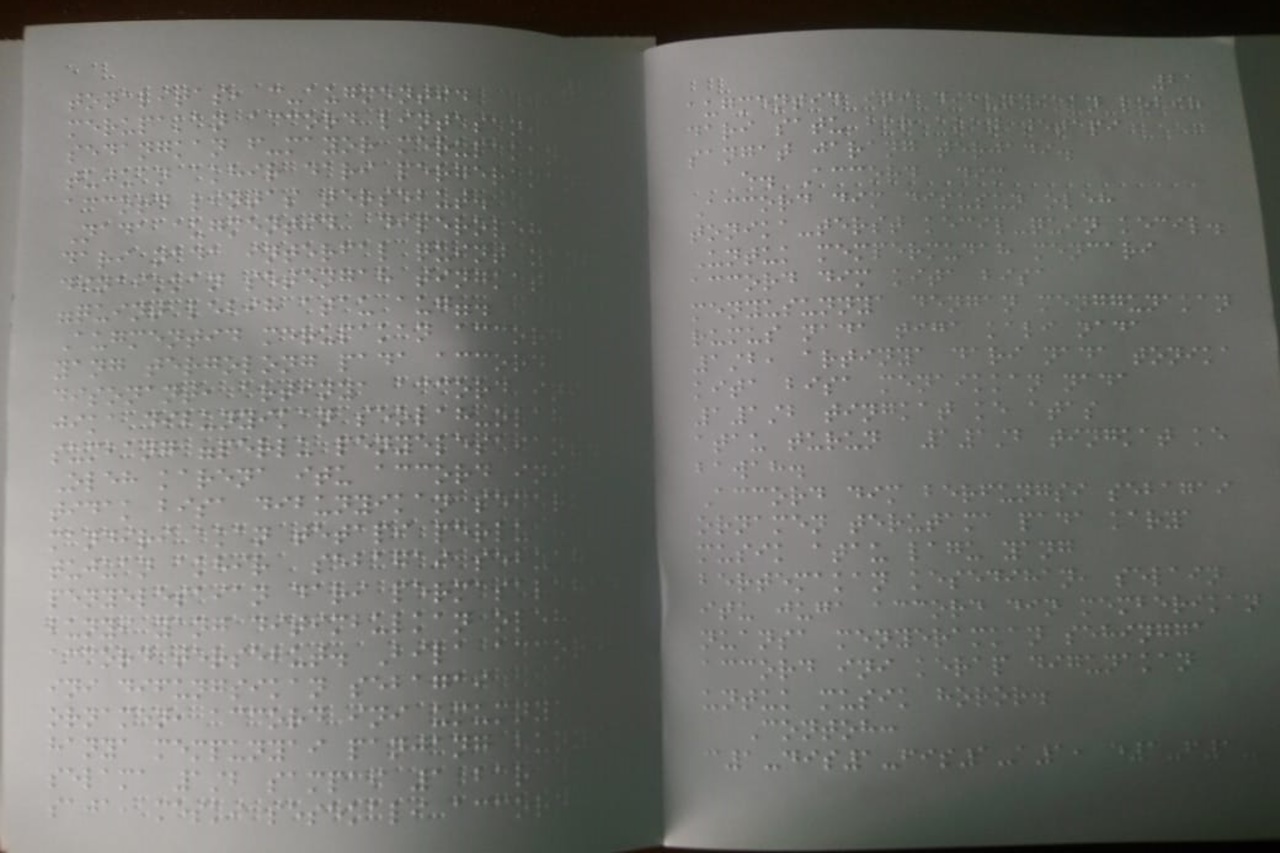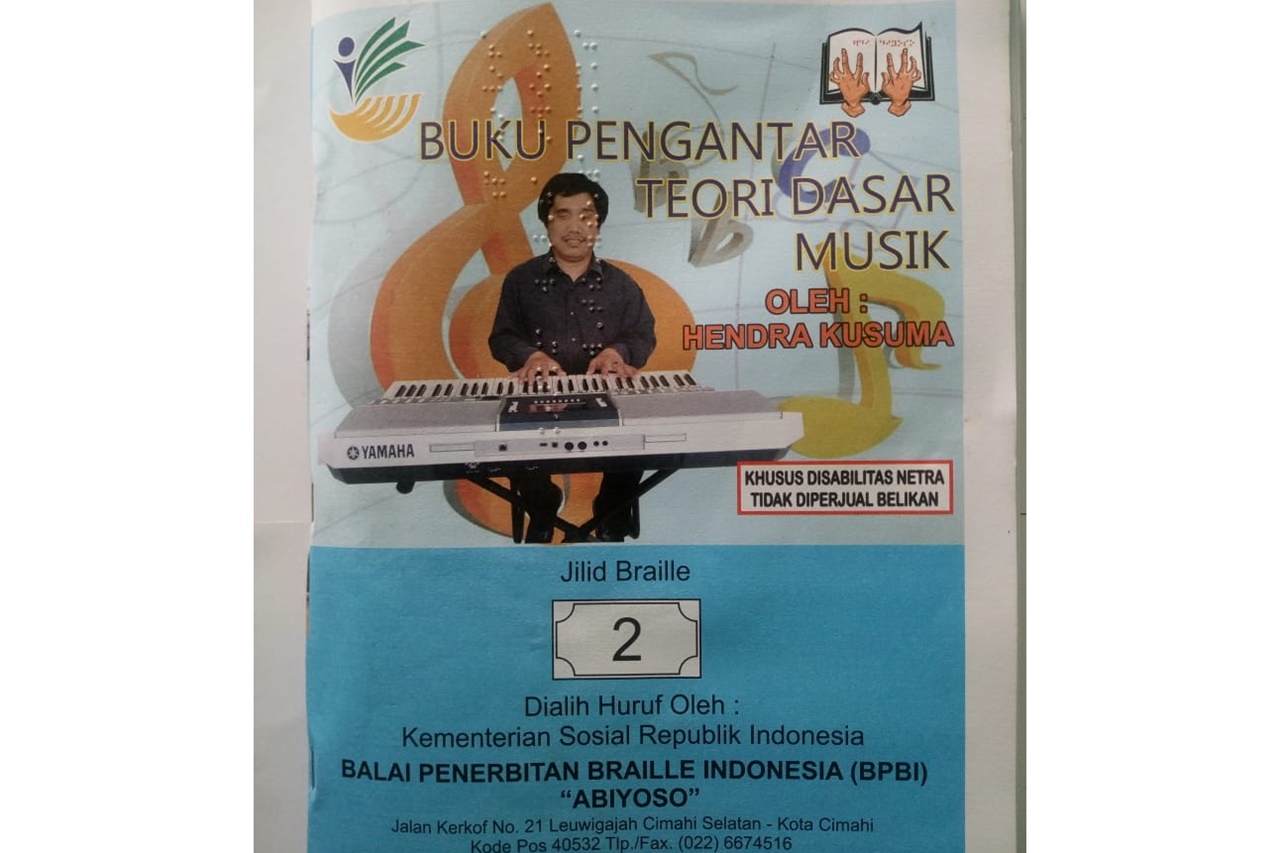Basic Theory of Music: BLBI “Abiyoso” Concern about Music Literacy with Persons with Visual Sensory Disabilities
Translator :
Karlina Irsalyana
CIMAHI (March 15,
2022) - Music is the most universal language in the world. Everyone likes
music, of course with different tastes in musical genres. Since birth, humans
have been introduced to music, at least through the mother's soft hums and pats
when she wants to sleep her baby. If you pay close attention, the
sound of animals is rhythmic.
The specialty of
music does not end there. Music also has a calming and healing effect. It is
not surprising that music is used as a therapeutic medium (musical therapy). Some people feel more comfortable studying and working when they
hear music or songs around them. Some people are easier to fall asleep
when accompanied by soft tones and rhythms.
Music can also be
an encouragement, for example in sports competitions, military activities, or
in civil ceremonies. Every country is required to have a national
anthem. Music is also almost always a part of religious activities, even every
religion, whether we realize it or not, has a distinctive musical
characteristic. We often find surgery rooms in hospitals decorated with
music/songs so that both doctors and patients can be calmer in dealing with
surgical procedures.
Music also promises
income for those who pursue it professionally. No wonder so many people choose
music as a source of income. Persons with visual sensory disabilities are no
exception. The music profession is almost always the main choice for many blind
people in Indonesia. Whether as a musician, vocalist, or both at once. Not
infrequently those who even have their private recording studio, musical
instrument rental business, also become music teachers in various institutions.
Despite being
awarded an extraordinary musical quality, apparently, there is one thing that
still often becomes an obstacle for most musicians with visual sensory
disabilities. None other than the limited number of books that contain
knowledge of braille notation. Therefore, it is natural that there are still
many blind musicians who do not understand how to write and read sheet music.
The
Indonesian Braille Literacy Center (BLBI) "Abiyoso" Cimahi is well
aware of this. As a literacy service institution for people with disabilities,
this institution took the initiative to publish a book entitled 'Basic Theory
of Music' in braille format in 2017. This book explains tones, how to
compose them into a song, and last but not least, the introduction of symbols
for braille music notation, which is one of the features of braille writing.
"To recognize and understand the symbols of
musical notation, the blind people cannot rely on audio or digital formats.
Such symbols can only be identified by the blind through touch. By knowing
their shape, the blind can read and write them," said Hendra Kusuma as
author of Basic Theory of Music.
This book, said Hendra, was made to help blind musicians to have musical literacy.
“At the very least, by mastering Braille musical
notation, they can record their work so that they can be remembered. We can use
technology to save our work, but if for example our device suddenly runs out of
power or an error, we don't need to panic, just read the braille version,"
said the professional blind musician from Cirebon.
Furthermore, Hendra explained that sheet music
is very important to be read by blind musicians before playing music.
“Never mind the blind, even the non-blind still
really need to read scores before playing music, either just practicing or
performing on stages, even though they can play while reading. Well, especially
blind. They can never do that (play music while reading sheet music).
Therefore, the ability to read and write braille musical notation is very
necessary for a blind musician to be able to compose and memorize the sheet
music before performing," said Hendra.
The Book of Basic Music Theory was printed in
two braille volumes and became one of the most popular books among the recipients
of the BLBI "Abiyoso". So it is natural that over the years, this book
has been reprinted to meet the increasing demands of the beneficiaries. Not
only Basic Music Theory Books, but BLBI "Abiyoso" also provides other
braille books which are certainly useful for the blind.
"Hopefully, this book can continue to
spread and sow benefits for persons with visual sensory disabilities wherever
they are. Likewise with BLBI "Abiyoso" so that they can continue to
present quality books that are relevant to the needs of the community,
especially persons with disabilities," said Hendra.
 English
English
 Bahasa
Bahasa




